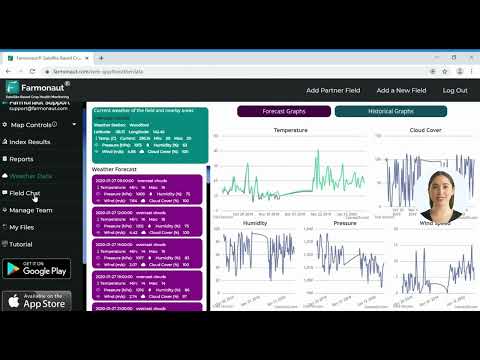Montana’s Right to Repair Bill: How New Legislation Could Transform Farm Equipment Repairs

“Montana’s right to repair bill could impact over 27,000 farms and ranches across the state’s 58 million acres of farmland.”
In the vast agricultural landscape of Montana, a groundbreaking piece of legislation is making waves. The Montana Right to Repair Bill, currently under debate in the state legislature, has the potential to revolutionize how farmers and ranchers maintain and repair their essential equipment. As we delve into this crucial topic, we’ll explore the implications of this bipartisan effort and its potential impact on the agricultural community.
Understanding the Montana Right to Repair Bill
The proposed legislation, known as House Bill 390, aims to grant farmers and independent repair providers access to the tools, parts, and software necessary for agricultural equipment repairs. This bill addresses a long-standing issue in the farming community: the limited options and extended wait times for equipment repairs, especially during critical farming periods.
At its core, the Montana Right to Repair Bill seeks to:
- Allow farmers to repair their own equipment without relying solely on authorized dealers
- Provide access to essential repair tools and software
- Promote competition in the repair market
- Reduce equipment downtime for farmers
As we examine this legislation, it’s important to consider how technology is reshaping the agricultural landscape. Companies like Farmonaut are at the forefront of this transformation, offering satellite-based farm management solutions that complement the evolving needs of modern farmers.
The Current State of Farm Equipment Repairs in Montana
To understand the significance of this bill, we must first look at the challenges Montana farmers currently face:
- Limited repair options due to manufacturer policies
- Long wait times for authorized technicians
- High costs associated with dealer-only repairs
- Potential crop losses due to equipment downtime
Rep. Paul Tuss, D-Havre, the bill’s sponsor, highlighted these issues, stating, “Per manufacturer policy, repairs can only be performed at an authorized repair location or by an authorized technician. In our state, there are few these facilities and not enough technicians to go around.”
“Agricultural equipment repairs can cost farmers up to 40% of a machine’s value annually, highlighting the importance of accessible repair options.”
The Debate: Supporters vs. Opponents
The Right to Repair Bill has sparked a heated debate in Montana, with strong arguments on both sides:
Supporters’ Arguments:
- Promotes free market principles
- Reduces equipment downtime
- Empowers farmers to make timely repairs
- Potentially lowers repair costs
Sarah Degn, a Montana farmer, testified, “I completely love my dealers, I love the people that I work with, but there’s not enough of them. And when we can’t access the tools we need to repair ourselves, our local mechanics who are also great can’t do it, we sit and we wait and we watch our crops rot in the field and we lose money every day.”
Opponents’ Concerns:
- Potential safety risks from unauthorized repairs
- Concerns about intellectual property protection
- Possibility of equipment modifications that could violate warranties or regulations
Luke Anderson from C & B Operations in Montana expressed concerns, saying, “With the language in this bill, it does open the door for modifications which is the scary part. And those include deleting emissions, increasing horsepower, and overriding safety stops. It can result in equipment failures, malfunctions and dangerous accidents.”
As the debate continues, it’s worth noting that technology companies like Farmonaut are providing innovative solutions to help farmers optimize their operations. While not directly related to equipment repairs, these advanced farm management tools can help mitigate some of the challenges faced by farmers.
Potential Impact on Montana’s Agricultural Community
If passed, the Right to Repair Bill could have far-reaching effects on Montana’s farming and ranching operations:
- Increased autonomy for farmers in managing equipment repairs
- Potential reduction in repair costs and equipment downtime
- Growth of independent repair businesses in rural areas
- Possible changes in manufacturer policies and practices
Ron Harmon, owner of Big Equipment Company in Havre, emphasized the financial aspect, stating, “It’s wrong. It’s the only industry that has tied down the farmer to say ‘You’re going to come to my dealership, you’re going to buy the parts from me and I’m the only one who can repair it.’ Ladies and gentlemen, it ought not be a partisan decision here.”
To better understand the potential changes, let’s examine a comparison of the current situation versus the proposed scenario:
| Repair Scenario | Current Situation | Proposed Scenario |
|---|---|---|
| Access to Tools and Software | Limited | Expanded |
| Repair Options | Manufacturer-only | Independent Providers |
| Estimated Average Repair Time | 5-7 days | 1-3 days |
| Estimated Cost Impact | High | Potentially Lower |
| Farmer Control | Limited | Increased |
| Diagnostic Tools | Restricted | Accessible |
| Repair Manuals | Limited Access | Freely Available |
| Software Updates | Dealer-Only | User-Accessible |
| Spare Parts Availability | Restricted | Open Market |
| Emergency Repairs | Dependent on Dealer | Self-Serviceable |
| Long-term Equipment Maintenance | Dealer-Controlled | User-Managed |
While this legislation focuses on equipment repairs, it’s important to note that modern farming involves a wide range of technologies. For instance, Farmonaut’s satellite-based crop monitoring can help farmers proactively manage their fields, potentially reducing the strain on equipment and the frequency of repairs.
The Broader Context: Right to Repair Movement
Montana’s proposed legislation is part of a larger national and global movement advocating for the right to repair. This movement extends beyond agriculture, encompassing consumer electronics, automobiles, and other industries. Key aspects of this broader context include:
- Similar legislation being considered in other states
- Federal Trade Commission investigations into repair restrictions
- Growing consumer awareness and demand for repair rights
- Environmental concerns related to e-waste and product longevity
The Federal Trade Commission’s lawsuit against John Deere, mentioned in the context, is a significant development in this space. According to the FTC complaint, John Deere only allows dealers access to its interactive software tool, shutting out independent repair shops and individual farmers.
Industry Response and Adaptation
As the Right to Repair movement gains momentum, agricultural equipment manufacturers and dealers are responding in various ways:
- Development of Memorandums of Understanding (MOUs) with farm bureaus
- Incremental increases in repair tool access
- Enhanced training programs for dealership technicians
- Exploration of remote diagnostic capabilities
Nicole Rolf, a Montana Farm Bureau representative, highlighted these efforts, stating, “We believe the MOUs are working and doing their jobs. The MOUs cover about three-quarters of the ag machinery sold in the U.S… While these were created by the American Farm Bureau these apply to every owner of equipment.”
However, critics argue that these voluntary agreements don’t go far enough in addressing the core issues faced by farmers. The debate continues on whether industry self-regulation is sufficient or if legislative action is necessary to ensure fair repair practices.
The Role of Technology in Modern Agriculture
As we discuss the right to repair farm equipment, it’s crucial to consider the broader technological landscape of modern agriculture. Advanced technologies are transforming how farms operate, offering new solutions to age-old challenges. For instance:
- Satellite-based crop monitoring for optimized resource management
- AI-driven advisory systems for personalized farming insights
- Blockchain technology for supply chain transparency
- Precision agriculture tools for targeted interventions
Companies like Farmonaut are at the forefront of this agricultural revolution, providing farmers with tools to make data-driven decisions. While these technologies don’t directly address equipment repairs, they can help farmers optimize their operations, potentially reducing wear and tear on machinery.
Legislative Process and Next Steps
The journey of the Montana Right to Repair Bill through the legislative process is a critical phase that will determine its future. Here’s what we can expect:
- Committee hearings and debates
- Potential amendments to address concerns from various stakeholders
- Votes in both chambers of the Montana Legislature
- If passed, implementation and enforcement planning
This is the third session in which Right to Repair legislation has been proposed in Montana, with previous efforts not making it to the floor. However, supporters are hopeful that the bipartisan support for HB 390 will lead to a different outcome this time.
Implications for Other States and National Policy
Montana’s Right to Repair Bill could have far-reaching implications beyond the state’s borders:
- Potential inspiration for similar legislation in other agricultural states
- Influence on national conversations about right to repair
- Possible impact on manufacturer policies across the country
- Contribution to broader discussions on consumer rights and product ownership
As states like Montana grapple with these issues, it’s worth noting that technological solutions continue to evolve. For example, Farmonaut’s API and developer documentation demonstrate how agricultural technology is becoming more open and accessible, potentially aligning with the spirit of the right to repair movement.
Balancing Innovation and Accessibility
One of the key challenges in the right to repair debate is striking a balance between protecting manufacturers’ intellectual property and ensuring farmers have the ability to maintain their equipment. This balance is crucial for:
- Encouraging continued innovation in agricultural technology
- Maintaining safety and regulatory compliance
- Ensuring the long-term sustainability of both manufacturers and farmers
- Promoting a competitive market for repairs and services
As we consider this balance, it’s worth noting that companies like Farmonaut demonstrate how technological innovation can be made accessible to farmers through user-friendly platforms and open APIs. This approach could serve as a model for how the agricultural industry might evolve to meet the needs of all stakeholders.
Environmental Considerations
The Right to Repair movement also intersects with environmental concerns:
- Reducing electronic waste by extending equipment lifespan
- Promoting more sustainable farming practices through efficient equipment use
- Encouraging the development of more repairable and modular equipment designs
- Aligning with broader sustainability goals in agriculture
These environmental aspects add another layer of complexity to the debate, as policymakers must consider not only economic and practical implications but also the long-term environmental impact of their decisions.
The Future of Farming in Montana
As we look to the future, the Right to Repair Bill represents just one aspect of the evolving agricultural landscape in Montana. The future of farming in the state is likely to be shaped by a combination of factors:
- Technological advancements in farm management and equipment
- Changing climate patterns and the need for adaptive farming practices
- Shifts in consumer preferences and market demands
- Ongoing policy developments at the state and federal levels
In this context, tools like Farmonaut’s satellite-based crop monitoring and AI advisory systems could play an increasingly important role in helping Montana’s farmers navigate these changes efficiently and sustainably.
Conclusion: A Pivotal Moment for Montana Agriculture
The Montana Right to Repair Bill represents a pivotal moment for the state’s agricultural community. As lawmakers debate this legislation, they are essentially shaping the future of farming in Montana. The outcome of this bill could have far-reaching implications for:
- The economic viability of small and medium-sized farms
- The relationship between farmers and equipment manufacturers
- The development of rural economies and independent repair businesses
- The broader conversation about consumer rights and product ownership
As we await the final decision on this groundbreaking legislation, it’s clear that the agricultural industry is at a crossroads. The Right to Repair Bill, combined with technological advancements like those offered by Farmonaut, could usher in a new era of empowerment and efficiency for Montana’s farmers.
Regardless of the outcome, this debate has already sparked important conversations about the future of farming, the role of technology in agriculture, and the rights of equipment owners. As Montana leads the way in addressing these crucial issues, the eyes of the nation’s agricultural community will undoubtedly be watching closely.
Earn With Farmonaut: Affiliate Program
Earn 20% recurring commission with Farmonaut’s affiliate program by sharing your promo code and helping farmers save 10%. Onboard 10 Elite farmers monthly to earn a minimum of $148,000 annually—start now and grow your income!
FAQ Section
What is the Montana Right to Repair Bill?
The Montana Right to Repair Bill (House Bill 390) is proposed legislation that aims to allow farmers and independent repair providers access to the tools, parts, and software necessary for agricultural equipment repairs.
How could this bill benefit Montana farmers?
The bill could potentially reduce repair costs, decrease equipment downtime, and give farmers more control over maintaining their machinery, especially during critical farming periods.
What are the main arguments against the bill?
Opponents express concerns about potential safety risks from unauthorized repairs, intellectual property protection, and the possibility of equipment modifications that could violate warranties or regulations.
How does this bill relate to the broader Right to Repair movement?
This bill is part of a larger national and global movement advocating for consumers’ right to repair their own devices and equipment across various industries, including electronics and automobiles.
What is the current status of the bill?
As of the latest update, the bill is being debated in the Montana state legislature. It has bipartisan support but still needs to pass through committee hearings and votes in both chambers.
How might this bill impact agricultural equipment manufacturers?
If passed, manufacturers may need to adjust their policies, potentially providing more access to repair tools and information. It could also influence their product designs and business models.
Are there similar laws in other states?
While several states have considered Right to Repair legislation, Montana’s bill is specifically focused on agricultural equipment. The outcome of this bill could influence similar efforts in other states.







